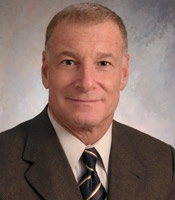
I remain an IBD-ologist and at DDW I tend to focus on advances in our field. So, what did I learn?
IBD causation is not simple or easy (yet). There is a spectrum of complexity between gene and environmental interactions. It is becoming clear that one end of the spectrum — severe IBD in early onset IBD — is driven primarily by genetics and in some cases can be treated by bone marrow transplants once a specified mutation has been identified. In contrast, in the more usual spectrum of IBD there is an increasing influence of environmental exposures, including those that impact the microbiome.
Consistent evidence exisits for an asymptomatic “prodrome” of IBD, identified by several different data sets from military recruits in Israel, Europe, and now the United States, suggesting that serologies obtained in asymptomatic recruits are predictive of future development of IBD. Moreover the evidence suggests that quantification of serologic patterns and titers can predict eventual IBD phenotypes. Ongoing studies of families with IBD will help to elucidate genetic, serologic, microbiome and other environmental interactions.
It is also becoming apparent that the deeper we induce biologic healing in IBD, the better the outcomes. This is intuitive, but data continue to support the concept. We have learned that (endoscopic) “mucosal healing” leads to short-term reductions in hospitalizations and surgeries, although an ultimate definition of mucosal healing in UC and CD remains elusive.
I am conflicted as an author and steering committee member on the PREVENT trial of infliximab in post-operative Crohn’s disease, but believe it will stand as a landmark trial. Consistent with the results of a small, pilot study of infliximab in the prevention of post-operative recurrence previously published by

Dr. Miguel D. Regueiro at the University of Pittsburgh, infliximab was highly effective at reducing severe endoscopic lesions proximal to ileo-colonic anastomoses. However, in contrast to this smaller study from Pittsburgh, in the PREVENT trial the mucosal protection did not lead to statistically significant improvements in clinical outcomes over two years.
Many of us continue to interpret these findings as positive support for mucosal healing, but the time-frame between endoscopic and clinical outcomes will make future development of post-operative therapies more complicated due to the long duration of follow-up to discern positive clinical impacts.
Along the same lines of “the deeper the better” come data on histologic healing in UC. We’ve already seen database analyses demonstrating that with current therapies and surveillance, the risk of cancer in UC is now nearly identical to the risk in the general population. At DDW this year, there was further evidence that with current therapies we are able to completely normalize histology in UC such that the once persistent residual crypt architectural distortion can actually resolve.

Dr. David Rubin and colleagues (again, I’m prejudiced because I contributed to the
study) have demonstrated that complete histologic healing bodes an even better outcome regarding neoplastic transformation in the colon than does either residual architectural distortion or residual inflammation. We now have the ability to alter the course of IBD in expanding patient populations.
Stephen B. Hanauer, MD, FACG, ACG President
Related resources
ACG’s Practice Guidelines for Ulcerative Colitis in Adults and Management of Crohn’s Disease in Adults.
The ACG has created a new resource to help patients manage IBD, ACG Expert Tips for Living Well with IBD.
Ulcerative Colitis Guidebook & Video: A New Resource for Patients

